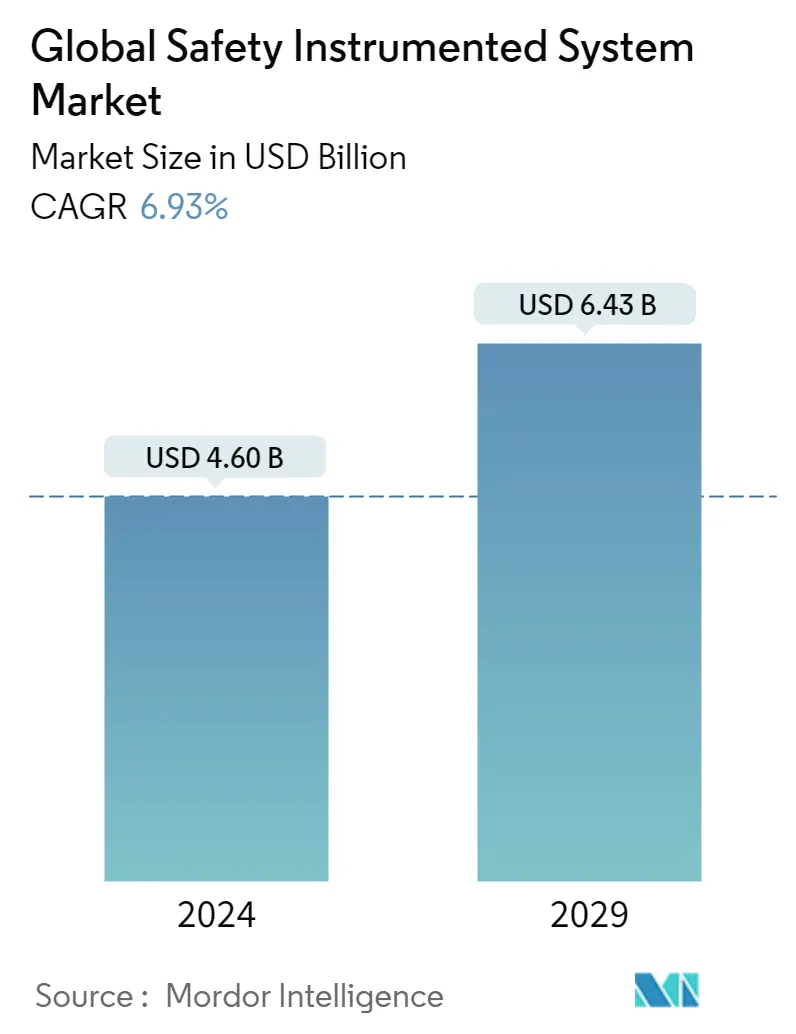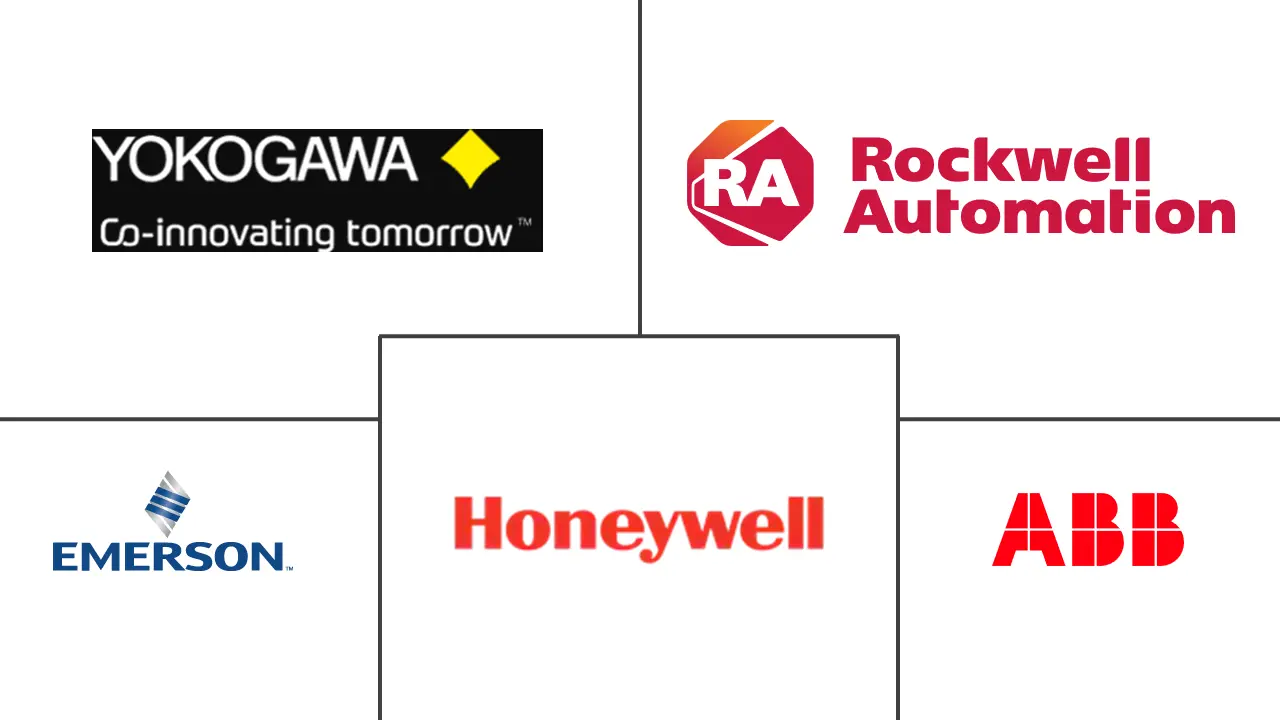Market Size of Global Safety Instrumented System Industry

| Study Period | 2019 - 2029 |
| Market Size (2024) | USD 4.60 Billion |
| Market Size (2029) | USD 6.43 Billion |
| CAGR (2024 - 2029) | 6.93 % |
| Fastest Growing Market | Asia-Pacific |
| Largest Market | Middle East and Africa |
Major Players
*Disclaimer: Major Players sorted in no particular order |
Need a report that reflects how COVID-19 has impacted this market and its growth?
Safety Instrumented System Market Analysis
The Global Safety Instrumented System Market size is estimated at USD 4.60 billion in 2024, and is expected to reach USD 6.43 billion by 2029, growing at a CAGR of 6.93% during the forecast period (2024-2029).
The widespread adoption of safety regulations and standards, coupled with increased awareness about the need for industrial safety management and competency at both individual and organizational levels, has led to the rapid adoption of safety switches in manufacturing units to prevent any accidents.
- Around seven employees fell ill after inhaling poisonous gas at Shakti paper mills in Tetla village near Raigarh, and a fire broke out at a pharmaceutical packaging factory in the Satpur area near Nashik city all in one day, in 2020 in India. Such an alarming situation has emphasized the need for the adoption of high integrity pressure protection systems by various end-user industries in the country. HIMA, a vendor of safety solutions for the oil and gas industry, offers pivotal solutions for industrial safety specific to Malaysian oil and gas producers. According to the company, the offshore oil and gas companies face huge losses due to unplanned downtime, and the company offers its HIMA Flex SILon TMC with HiMax, an integrated solution that provides safe and cost-effective turbomachinery operation, to tackle such issues.
- Further, the industrial processes across chemicals and petrochemicals, power generation, pharmaceutical, food and beverage, oil and gas, and other end users are closely regulated by various governing bodies to prevent sudden breakdowns and mishaps. The regulatory environment has tightened to encourage the deployment of SIS as a precautionary measure. The widespread adoption of safety regulations and standards, coupled with increased awareness about the need for industrial safety management and competency at both individual and organizational levels, has led to the rapid adoption of safety switches in manufacturing units to prevent any accidents.
- The deployment of the SIS in the oil and gas industry is driven by the strict laws and acts that are formulated to restrict catastrophic spillage and avoid environmental pollution. For instance, the US Oil Pollution Act, alongside Oil Spills Prevention and Preparedness Regulations, is placed to prevent such accidents. Several compliance programs like the On-Site Civil Inspection Procedures Rule, as contemplated by section 7 of EO 13892, Ensuring Reasonable Administrative Inspections check if the facilities are complying with the environmental laws. The growing regulatory environment in various industries contributes to market growth.
- The global outbreak of COVID-19 has significantly impacted the growth of various industries as most companies had to put a complete stop or limit their production owing to several restrictions put by the government to curb the spread of the virus. As a result, the pandemic had a notable impact on the growth of the Safety Instrumented Systems (SIS). For instance, the oil and gas industry, which is among the largest end-user for the SIS, is experiencing an unprecedented double blow, owing to the oil market collapse with the benchmark price for US crude oil, briefly touching a record low and a global economic slowdown driven by the COVID-19 pandemic.
- According to International Energy Agency, the oil and gas revenues for a number of key producers fell between 50 to 85% in 2020; compared with 2019, the losses could even be larger depending on future market developments. Furthermore, for many oil-producing developing countries, wherein oil contributes the majority of their exports and government revenues, the impact was even higher, limiting the ability of these countries to respond to the multidimensional domestic pressures produced by COVID-19.
